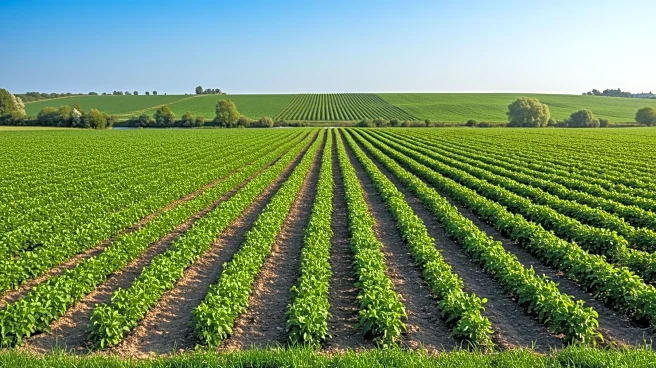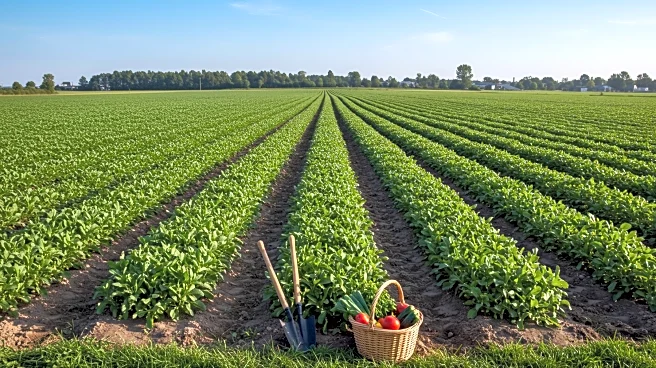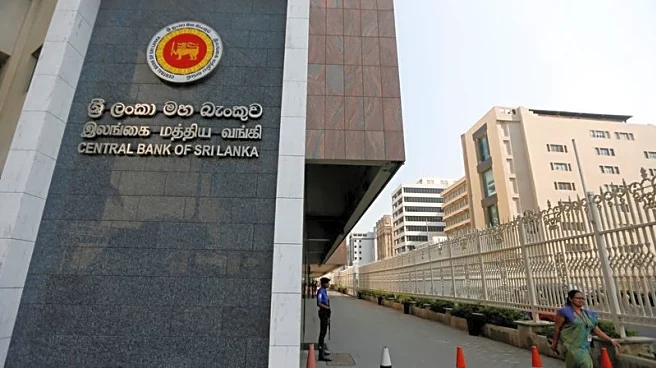What's Happening?
The World Bank, in collaboration with the Food and Agriculture Organization (FAO) and the International Fund for Agricultural Development (IFAD), has released a comprehensive review of Eswatini's agricultural sector. The report, titled 'Eswatini Agriculture Sector Review: Catalyzing Agri-Food System Transformation,' examines the current state of agriculture in Eswatini, which contributes over 7% to the nation's GDP. Despite its importance, the sector has been underperforming, with agricultural output declining by 4% between 2010 and 2021, even as public agricultural expenditure more than doubled. The report identifies structural inefficiencies, inflationary pressures, and weak market linkages as key challenges. It also highlights the potential of four commodity value chains—maize, beef, vegetables, and dairy—as engines of growth, provided they are managed effectively.
Why It's Important?
The findings of the World Bank report are significant as they underscore the potential for Eswatini's agriculture to drive economic growth, job creation, and food security. The sector's stagnation poses a risk to rural livelihoods and the broader economy. By addressing structural inefficiencies and enhancing market linkages, Eswatini can unlock the potential of its agricultural sector. The report's emphasis on smallholder commercialization and market-oriented investment models could lead to more inclusive growth, benefiting small-scale farmers who currently face barriers such as high input costs and limited access to credit. The successful transformation of Eswatini's agriculture could serve as a model for other countries facing similar challenges.
What's Next?
The report calls for a shift from input- and production-focused spending to a systems-based, market-oriented investment model. This includes aligning public resources with specific value chains, encouraging private sector investment, and strengthening institutional capacity. The roadmap suggests promoting smallholder commercialization through improved seed systems, targeted irrigation investments, and cooperative business models. It also recommends building industry associations, fostering public-private dialogue, and embedding climate-smart practices. The government is urged to reallocate resources strategically, focusing on public goods like rural infrastructure and agricultural research, while supporting private-sector-led areas such as agro-processing and export-focused production.
Beyond the Headlines
The report highlights the dual agricultural structure in Eswatini, where large commercial estates dominate production, while smallholders rely on low-yield subsistence farming. This divide contributes to inequality in access to resources and markets. The review suggests that public spending patterns reinforce this imbalance, with a significant portion of investment directed toward capital-intensive projects. By adopting a more inclusive approach, Eswatini can bridge this gap and ensure that smallholders benefit from agricultural growth. The report also draws lessons from successful agricultural transformations in other countries, emphasizing the importance of well-targeted policies and inclusive value chain strategies.












